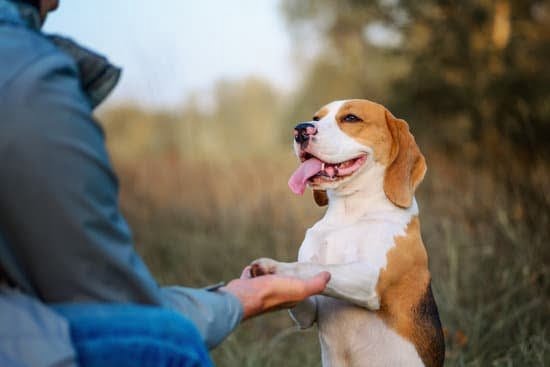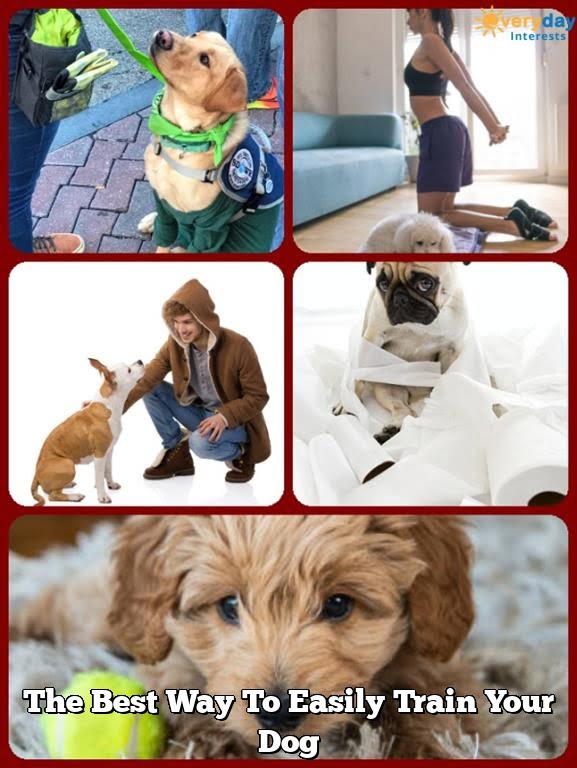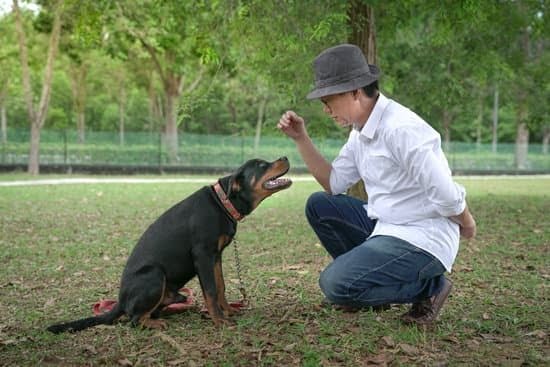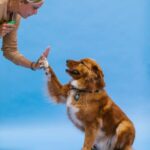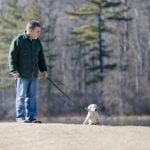Introduction
Potty training a dog can seem like a daunting task, but with patience and consistency it is possible. While potty training can take some time and dedication, the results are well worth the effort – you will have a well behaved pet that is easy to live with! Potty training your pet can bring a variety of benefits: it can reduce messes throughout the house, minimize diseases or infections, ensure consistency in its behavior, help save money on unexpected vet bills or even provide them with an outlet for their natural energy. It also increases the bond between you and your pet, who learn to trust each other better.
In addition to these long term benefits, potty training can also help your pet stay safe inside and out of your home. When dogs know what to do (and not to do) when they need to go outside, this helps them become more aware of hazardous materials such as poisons or other potentially dangerous objects. Properly trained pooches also obey commands better when faced with external stimuli such as strangers or loud noises – reducing the possibility of them running away in worry or fear. Lastly, by sticking to a schedules bathroom times both you and your pup will have greater peace of mind knowing exactly when they need go outdoors.
Overview of Supplies Needed
Potty training a dog can seem like a daunting task, but it doesn’t have to be. With some basic supplies and some patience, you can easily potty train your dog. The most important supplies needed are:
1. Puppy pads or mopping cloths: Puppy pads or mopping cloths are great for placing near the door for outdoors trips or by other areas in the house that you frequently bring your dog to. This will help remind them where they need to go when they need to go.
2. Baby gates: Baby gates are an excellent way to keep track of your pup while they are indoors and learning the ropes of housebreaking. It is especially useful if you have more than one pet in the household, as it will help you control where they can otherwise wander around while unsupervised.
3. Treats: As with any type of training, treats will make potty training easier on both you and your pup. Try sticking small treats in the same spot where you want them to go each time so that they start associating the place with something positive and tasty!
4. verbal cues or commands: Verbal cues such as ‘go potty’ or ‘outside’ will help make the whole process simpler for both parties involved. Developing a plan and routine from day one using consistent verbal cues or commands will help reinforce good habits and keep a level of enjoyment throughout training.
All these tools together should provide strong foundations for easy-to-follow potty training sessions with limited messes (for now!). Remember, consistency is key when teaching any type of behavior! Consistency is what will allow your four-legged friend to succeed — just keep at it and your pup will be going in no time!
Alternatives to Crate Training for Potty Training
One alternative to crate training is leash-potty training. Leash-potty training is a method often used with puppies, as this encourages the pup to form a positive association between going potty and being praised. To leash potty train, you will need a long lead that can be worn while outside of the house when you take your pup out for potty breaks. Take your pup outside every few hours and walk him around the same area each time. When he goes potty, say “Good potty” or something similar in an encouraging voice and offer him a treat. Doing this every single time your pup elite offers motivation for them to provide their relief in that specific place consistently. Additionally, gradually increase the amount of time between potty breaks so you are only taking them on walks when absolutely necessary; this teaches them bladder control and aids in their ability to hold it until they can go outside again.
How to Set Up Potty Training Routines
When it comes to potty training a dog, it’s important to establish a reliable and consistent routine. To do this, you’ll need to provide your pup with the same place and time they should go every day. This could be at certain times when you first arrive home, after meal time, or even in the morning before starting your day. Mark these times on your calendar, or set an alarm as a reminder.
Additionally, you will want to give them lots of opportunities during the day to relieve themselves. This means taking them out for regular potty breaks several times throughout the day. Allowing their body clocks to form and offering ample opportunity for walks helps immensely in potty training success. Additionally, keeping the same feeding schedule from day-to-day is also beneficial in ensuring your pup knows when to expect mealtime and for which hours he can control his bladder and bowels if needed. This also gives you an additional opportunity each day for taking your pup outside for potty training after meals since dogs tend to typically have digestive outputs within that same period of time. Lastly, rewards are always welcomed when teaching newcomers anything—and potty training is no different! So make sure that appropriate rewards such as verbal praise or treats are provided at those moments where they’ve done something correctly like going in designated areas only.
Overcoming Anxiety and Building Potty Training Confidence
Potty training a dog can be a daunting task that may cause anxiety in both the pet and its owner. To successfully potty train a dog, it is important to have patience and build the dog’s confidence in the process. To start, create a designated potty spot for your pup that are relatively close to their living space and make sure they can easily access it. Be consistent in taking them to the same spot each time so that they become familiar with where to do their business. Rewards and encouragement should be given when your pup is successful as positive reinforcement of good behavior will help them succeed faster. Additionally, try using an enzymatic cleaner on accidents so that they are not attracted back to those areas through smells. Create routine feeding times with regular walks at these times and after meals or naps so that your pup can learn to understand when it is necessary for them to use the bathroom. Lastly, focus on creating a calm but assertive environment by providing clear guidelines from day one and consistently reminding them of the rules set forth so there is no confusion on what you expect from your pup. Keep in mind that potty training takes time and consistency and fretting over every mishap will only add to the anxiety. Celebrate successes as much as possible as this reinforces positive behaviors for healthier outcomes!
Potty Training Tips for Different Dog Sizes/Breeds
Potty training a dog can depend somewhat on their size and breed. Some larger breeds, such as GreatDanes, may require more time and patience to train them to use the bathroom in the designated areas. To help make the training process go smoother, start by establishing a routine to take your pup outside at regular intervals throughout the day. A shorter-haired breed will need to be taken out more often than a long-haired breed due to their inability to hold their bathroom needs for longer periods of time.
For small dogs like Chihuahuas, create an area inside your house that will become your pet’s designated “potty spot”. Use an indoor potty pad or plastic grass as a reminder for your pet where they should go when they need to pee. Place it in a nearby location from where you normally hang out with your pup so that it can become routine for them over time. Be sure to reward positive behavior with praise or treats when the pup goes in their designated potty spot too!
For medium sized breeds such as Golden Retrievers, practice taking walks around the neighborhood on a regular basis and try to stop at certain points along the way so that you pup has plenty of opportunities throughout the walk if they need it. It is also important to have consistent consequences in place when accidents do occur indoors because this can help prevent future unwanted bathroom behaviors inside your home.
Finally, some larger breeds have special considerations because they are not able potty themselves as easily as smaller dogs do, so it is important keep an eye out on these dogs at all times until they have mastered pottying outside without fail. Make sure you provide ample opportunities for restroom breaks during playtime and after meals so that it becomes second nature for them over time. Consistent communication during this process is key with any size or breed of dog!
How to Spot Potty Training Progress
Spotting progress when potty training a dog is an important part of the training process. While you should focus more on rewards and positive reinforcement, it is also important to be able to gauge how well your dog is learning the task at hand. The following are a few steps that can help you monitor your dog’s progress while they are being potty trained:
1. Keep Track of Potty Frequency: An easy way to measure your pup’s potty training success is to pay attention to how often they are going outside and relieving themselves. If you notice that they are successfully holding in their bladder longer, than that is a good sign that they are making progress.
2. Monitor Body Language: If you observe signs of your pup sniffing around to locate where to go or squatting down, this means that they know what ‘potty time’ means and have some understanding of the process. This sort of behavior should be rewarded immediately with praise or treats so that your puppy associates these behaviors with something positive.
3. Celebrate Small Successes: Anytime your pup goes outside, stays calm, and makes it all the way through an entire potty time session without any accidents should be met with joyful celebration! This can come in the form of verbal praise like “Good boy!” or treats as long as there isn’t too many of them so he doesn’t forget why he’s getting rewarded in the first place (which isn’t just for simply going outside).
4. Watch Your Dog For Signs Of Anxiety: If you begin noticing signs that your pup may be starting to feel anxious while they’re inside such as whining or restlessness, try taking them out more frequently during potty times throughout the day in order to give them more practice at relieving themselves outdoors.
How to Handle Setbacks and Accidents
Whenever something goes wrong during potty-training your pup, it’s important to stay calm and remember that these accidents are a normal part of the process. The best way to deal with setbacks is to stay consistent and keep a close eye on your pup. Avoid punishing your dog for accidents; instead, focus on providing positive reinforcement when they successfully use the restroom outside. If you’re having frequent accidents, consult with an experienced dog trainer who can help you break the cycle. Long-term success often requires patience, understanding, and clear communication between pet and owner. When introducing new routines, remember to provide treats or rewards each time your pup completes the task correctly. Even during those moments of frustration, remain consistent in helping teach proper bathroom habits so that one day you have an obedient fur family member who uses their bathroom outside!
Long-term Solutions for Managing Potty Training
Once you have followed the steps for how to easily potty train a dog, it is important to develop long-term strategies for managing potty training. Reinforcement and consistency are key for keeping your dog on track. Setting up a routine is essential; taking your pup out at set times to the same spot can help train your pet to go in one area of the yard or take him straight to his designated bathroom spot upon leaving the house. Be sure to always reward any successful attempts with verbal praise and treats in order to break bad habits and encourage good ones. Additionally, discouraging inappropriate behavior when it occurs is critical. Yelling or punishing isn’t necessary—simply add a stern ‘no’ as a repeating deterrent. Some other tactics include crate training, which can be beneficial if used properly, as well as allowing your pup access only certain rooms or areas when unsupervised. With patience and dedication, efficient management of your pup’s potty training process can become second nature.
Conclusion
Once you have established a good potty training routine, it is important to make sure that it remains enjoyable and positive for both you and your dog. Always be sure to reward your dog when they go in the correct spot and never punish them for accidents that may occur during the process. You can do this by showing them lots of positive attention and treats when they have gone in the correct spot, even if it was just barely inside. This will help to reinforce good behavior and help build a strong bond between you two. When dealing with an accident, simply clean up any messes and take your pet outside again to try again rather than getting frustrated or angry at your pup. With patience and some consistent reinforcement, you will soon find that your pup has mastered their potty training skills!

Welcome to the blog! I am a professional dog trainer and have been working with dogs for many years. In this blog, I will be discussing various topics related to dog training, including tips, tricks, and advice. I hope you find this information helpful and informative. Thanks for reading!

